Posts in Category: ZimmVet News & Events
What is Feliway for Cats?
By: Laura Scharenbroich ZimmVet Daycare Staff

This easy on-the- go spray helps with any stressful event such as car rides and going to the veterinarian. It’s simple. All you have to do is spray directly in your cat’s carrier or basket or spray on your cats’ favorite blanket. During that car ride, re-apply inside your car every 4-5 hours. Always wait about 10 minutes before putting your cat in the carrier or car.
Is your cat stressed at home due to an upcoming move? Simple! Spray on doorways, window sills, and prominent objects around the house. Simply spray once daily to reduce stress.
Never spray directly on your cat and don’t spray on a scratching post, this will deter your cat from using it.
For more information on different types of Feliway, be sure to check out their website at https://www.feliway.com/us
Adaptil
By Michaela Tallant, ZimmVet Professional Pet Groomer
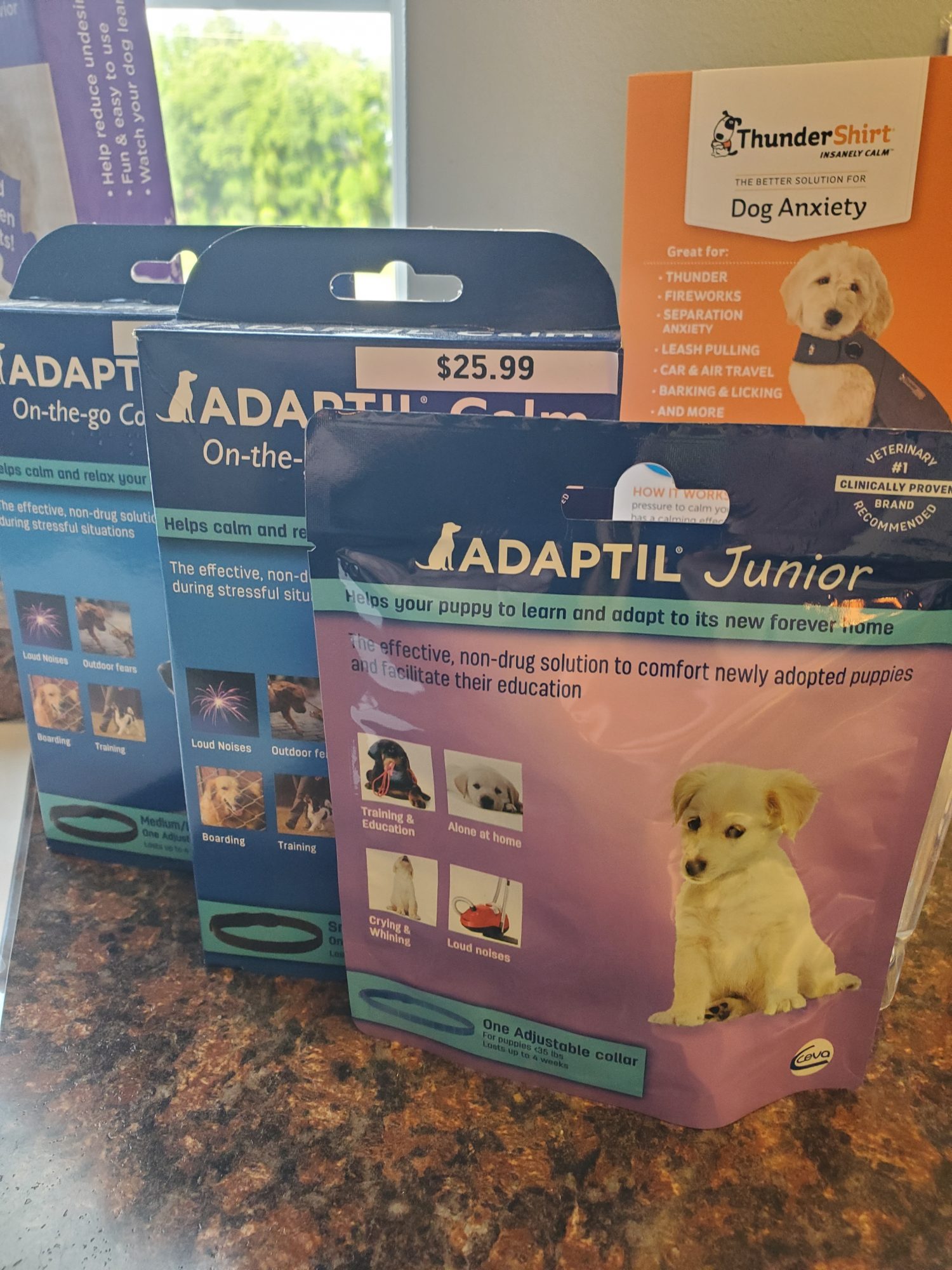
If your dog struggles with stress and anxiety, Adaptil is a great management tool. Whether you’re using it for a puppy or adult dog, Adaptil can help them feel comforted and secure.
How Does Adaptil Work?
Mother dogs can communicate with their puppies by using “comforting messages” that are released from the mammary zone. These messages are called dog appeasing pheromones. Adaptil releases these odorless pheromones to replicate the comforting messages they received as puppies. The 3 different kinds of dispensers that are used for Adaptil are listed below.
Home Diffusers
These diffusers are simple to use and a great tool for separation or kennel anxiety. All you have to do is plug it in to an outlet and give it a day to fully diffuse and disperse in the room. Keep in mind with these that the pheromone can’t travel around corners or through walls. So it is most ideal for small rooms that house your dog. The Diffuser itself is recommended to be replaced every 6 months and the refill of the pheromones needs to be done monthly.
Continue…Why Vaccinate your pet?
By Monica Bock, ZimmVet Daycare Staff
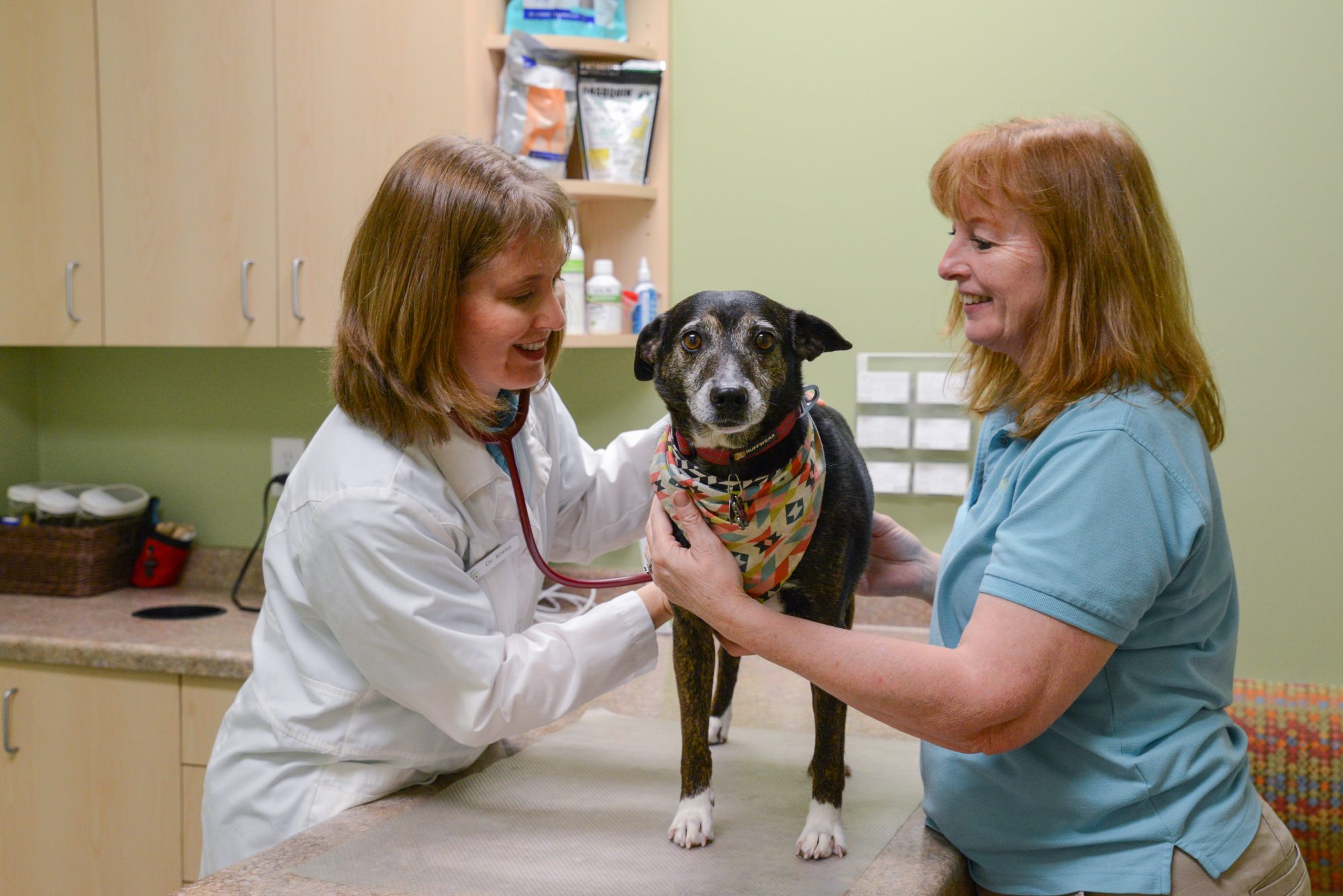
The main reason to vaccinate your pet is to prevent disease that can otherwise be transmitted to you, a loved one or other beloved pets. The best source of information on vaccinations is your veterinarian. They are equipped with handouts from credible sources and are educated extensively on this matter as it pertains to the wellbeing of your pet. Without vaccinations we would surely see more cases of preventable diseases plague our furry family members as well as our human family members in some cases.
What are Vaccines?
Vaccines, are solutions that contain antigens that stimulate the body’s immune system. Think of them as photocopies of the original. They will not cause harm to the pet because they are missing a key component that makes the original so dangerous.
Core Vaccinations:
Rabies
A deadly zoonotic disease (spread from animals to people), spread through the saliva of an affected animal. Depending on your state, the main carrier may vary, however the most common carriers of rabies is the bat, skunk, and raccoon in Minnesota. This disease is extremely dangerous and an infected animal will not necessarily show signs right away. An animal that is showing symptoms of the disease will ultimately die from the virus.
Distemper
A harmful and highly contagious disease effecting the respiratory, gastrointestinal, and nervous system. This disease is spread primarily through direct contact with the infected animal (coughing and sneezing). There is no cure for this disease and the only options for treatment are stabilization and letting the virus run its course. By getting the vaccine one can avoid the suffering of a pet and a costly fees from hospitilization.
Lifestyle Vaccines:
These vaccines are generally given based on the risk of exposure, whether that be a pet service you take your dog to (boarding, daycare, or grooming) or a job your dog may have such as hunting. Some of these life style vaccines help lower the probability of your pet catching one of these transferable diseases from another animal.
Continue…Brushing your Pets Teeth
By Michaela Tallant, ZimmVet Professional Pet Groomer

Gum disease is 5 times more likely to occur in pets than in people. This is why brushing your pet’s teeth daily is important.
Tips for Brushing
- There are many different toothpastes out there for pets. Make sure to get a flavored tooth paste (like beef or chicken). This way your pet thinks they are getting a treat out of it.
- Create a routine for your pet. Having your pet in a routine such as brushing every morning right after breakfast will make a big difference for both of you. It will become a normal part of their day and will make it less stressful for them.
- It’s important to give your pet lots of praise when first introducing them to a tooth brush. Also remember this is something that may be scary to them, so take it slow.
Brushing your pet’s teeth is a beneficial way to keep your pet healthy. You could also consider adding in a dental chew, such as Ora Vet, to help prevent tartar and improve breath. Make sure to talk with your veterinarian about other recommendations and tips to help keep your pet’s teeth healthy and clean.
How to get your cat comfortable walking on leash
By Angela Krieger ZimmVet Daycare and Hotel Staff
We all want our cats to be healthy and happy! One of the best ways to do this is taking your cat on walks. Though this may sound challenging, taking your cat for a walk can be a fun and enjoyable experience. It will also provide exercise for you and your cat while strengthening the bond with you and your furry friend.
It is always best to use a harness for walking with your cat. Here are the best ways to introduce your cat to a harness while keeping things fear free and positive.
It’s best to introduce your cat to a harness when it is still a kitten. Typically, kittens will be more excepting of something new. It’s important to make sure the harness you get is a good fit. So before going harness shopping measure your cat around the front of their chest, around their middle section, and just behind their front legs. Once you have picked out a harness that’s a good fit, take introducing them to it slowly.
Start out by placing your hand through the harness with your cat’s favorite treat and then let your cat eat the treat. Once your cat has eaten the treat, and seem to be enjoying the experience you’ll want to take a break and end this experience on a positive note. You’ll want to continue this process over several days. While doing this slowly move further along with the harness, so they understand they get positive reward for tolerating this new item. Repeat the process and whenever your cat seems comfortable let them walk into the harness and gently put the harness on the cat, do not force it. It will take some cats longer then others to be comfortable with the situation.
Once your cat is comfortable with the harness, you’ll want to attach a leash to it. Let the leash drag behind the cat for a couple of hours. Make sure to be walking around and calling your cat over to you with treat. This will help them adjust to having something attached to them. Once they are comfortable walking around the house with the harness and leash on, you’ll want to start holding the leash and directing the walks you and your cat take around the house. Again, lots of treats and positive rewards will help this adjustment process.
Once your cat is comfortable walking with you around the house, take a short stroll in your yard. You can let your cat lead the way if you feel that will make them more comfortable. Once your cat is fully adjusted to strolling around your yard, they are ready to take a walk! Make sure to keep your first couple of walks shorter and very positive. Bring treats along!
If your cat still doesn’t enjoy leash walking or the feeling of a harness on, you can always purchase cat strollers or backpacks. This way they can still experience the outdoors with you while enjoying the comfort of an enclosed safe space for them. This will still allow for wonderful bonding time for you and your beloved cat!
Preventing separation anxiety in puppies
By Michaela Tallant, ZimmVet Professional Pet Groomer
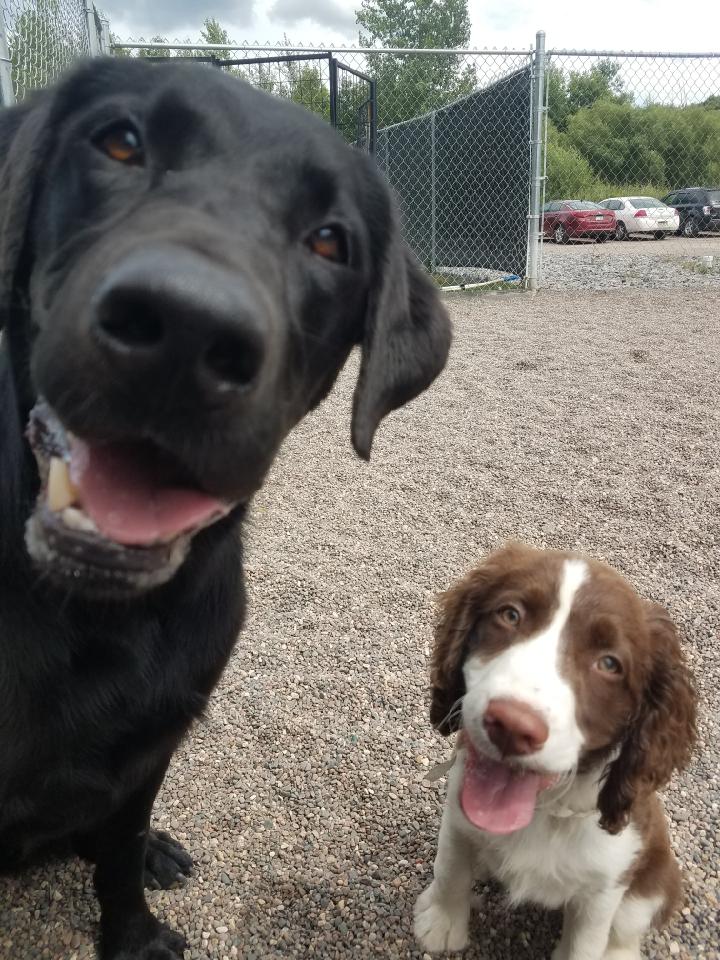
When bringing a new puppy home, it’s hard to consider much else other than snuggling and loving on them. But when you bring a new puppy home, there are many things to keep in mind to help them adjust to their new home life. Separation anxiety in dogs is very common. Its not fully understood why some puppies struggle with separation anxiety and other don’t. There are a few simple steps you can follow to help your new puppy adjust to spending time home alone.
Puppies love routines
It is important that you set a new schedule for your puppy. This will become their ordinary day, and help keep them more comfortable with your daily routine.
Basic obedience training
Practice general obedience with your pup! Here at ZimmVet we offer Puppy Classes that teach your pup all the obedience basics. This again, will teach them the do’s and don’ts of the house hold.
Crate training
If done correctly crates are a great tool to help your pup feel safe and comfortable while you’re away. It’s important to make sure they have a safe and cozy crate space, as soon as you bring them home. Use the crate for short periods of time while your home. For example you could feed them in their crate and let them relax in there for an hour after, while you’re getting ready for your day. Limit the amount of attention you give your pup before you leave for the day. This way it is not an overwhelming shock to them when you’re gone.
Don’t rush freedom
Though your ultimate goal may be to let your pup have free rain over the house while you’re gone, you don’t want to rush this. It can be overwhelming for them and promote problem behaviors due to anxiety or boredom.
Arriving home
When coming home it is important not to get overly excited. Immediately give them something to do by letting your pup out of the crate and take them outside to relieve themselves. This helps prevent them from thinking you leaving or coming home is a huge event.
Most puppies will whine and cry in the crate or when they are left alone. But it is important to watch for signs of “True Separation Anxiety” which is categorized as destructive or disruptive behavior. Examples of this are tearing up the room, constant barking, and scratching at the walls or doors. If your pup is struggling with more intense separation anxiety, reach out to your local vet and trainer to help your pup get the support they may need to cope with the anxiety.
Crate training your pup
By Michaela Tallant, ZimmVet Professional Pet Groomer
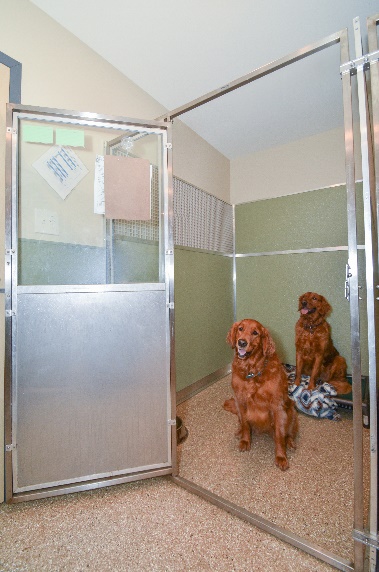
A lot of the time puppies will struggle with crate training. Sometimes it has to do with a general fear or anxiety of being left alone. Or it can be caused by not enjoying their “safe space.” Here are some tips to help your pup be more relaxed in their crate.
Picking the right crate.
You’ll want to make sure the crate you pick is the right size for your pup. Often times if you’re starting them younger, you can still buy a crate that will fit them as an adult, but use an insert to make the crate smaller. This will help them feel more cozy and secure. If puppies have too much space, they will potty or become more anxious in their crates.
Introducing your pup to the crate.
Put the crate somewhere in the house that is commonly used. Then you can choose a bed, soft blanket, or towel to put in the crate. Use treats and toys to help encourage your pup into the crate. Make sure the door stays open; we don’t want it to hit them on the way in or out. Allow your pup to continue to go in and out of their crate as they please, while you’re relaxing at home.
Continue…Gardening for your pets
By: Monica Bock, ZimmVet Daycare Staff

During this warm weather, we love to let our dogs roam the outdoors and run through the tall grass. It is good to note though that there are some plants that are hazardous to our furry friends. Some plants are known to cause serious medical issues which is why it’s important for all pet parents to know which common plants to keep away from your pets.
Veggies and Fruit to keep away from Rover:
Onions
Onions have been known to cause various types of anemia in dogs and should also be one of the vegetables to be avoided. They have compounds called disulfides and thiosulphate and according to the pet health website, these compounds are harmful in the fact that they damage the red blood cells so it is just best to stay safe and keep them away!
Grapes
Grapes have been known to cause kidney failure in dogs, while it’s not concluded as to what the exact cause for the reaction is, it has been observed that they can cause serious kidney issues resulting in death. Each dog may react differently, however according to the AKC website age, sex and breed has no direct correlation with the effect it has on the pup; it is strictly dependent on the dogs themselves.
Unripe tomatoes
While ripe tomatoes are okay for the occasional treat it is best to keep your unripe tomatoes away from your dogs. Tomatoes are in the nightshade family; this means that they contain components that can potentially be harmful to your pets. Solanine is among the threatening substances that tomatoes produce, found in the stems, leaves and young green unripe tomatoes, they can be dangerous in larger doses to your pet.
Continue…National Dog Day
By Amanda Jelinek ZimmVet Dog Daycare and Pet Hotel Reception Staff

National Dog Day is here! What a great reason to celebrate your beloved pet.
National Dog Day helps us realize what a huge part dogs take in our lives. This is a great time to take a moment to celebrate and appreciate all of the things your family pet does for you!
Dogs can do so many amazing different things for us. They have been used for years to help with therapy in nursing homes, hospitals, and day to day living. By using dogs for therapy, stress, and anxiety management, it can help improve things like our blood pressure, mental health and general daily stressors. So whether you’re hunting, traveling or just relaxing at home after a long day at work, your dog will always enjoy being right by your side.
There are so many wonderful companions just waiting for their forever homes. So the next time you’re looking to add a new family member, make sure to check out your local shelter to find your perfect match.
Five Reasons to Adopt a Mixed Breed
By Alisha Yamauchi, ZimmVet Pet Hotel Staff
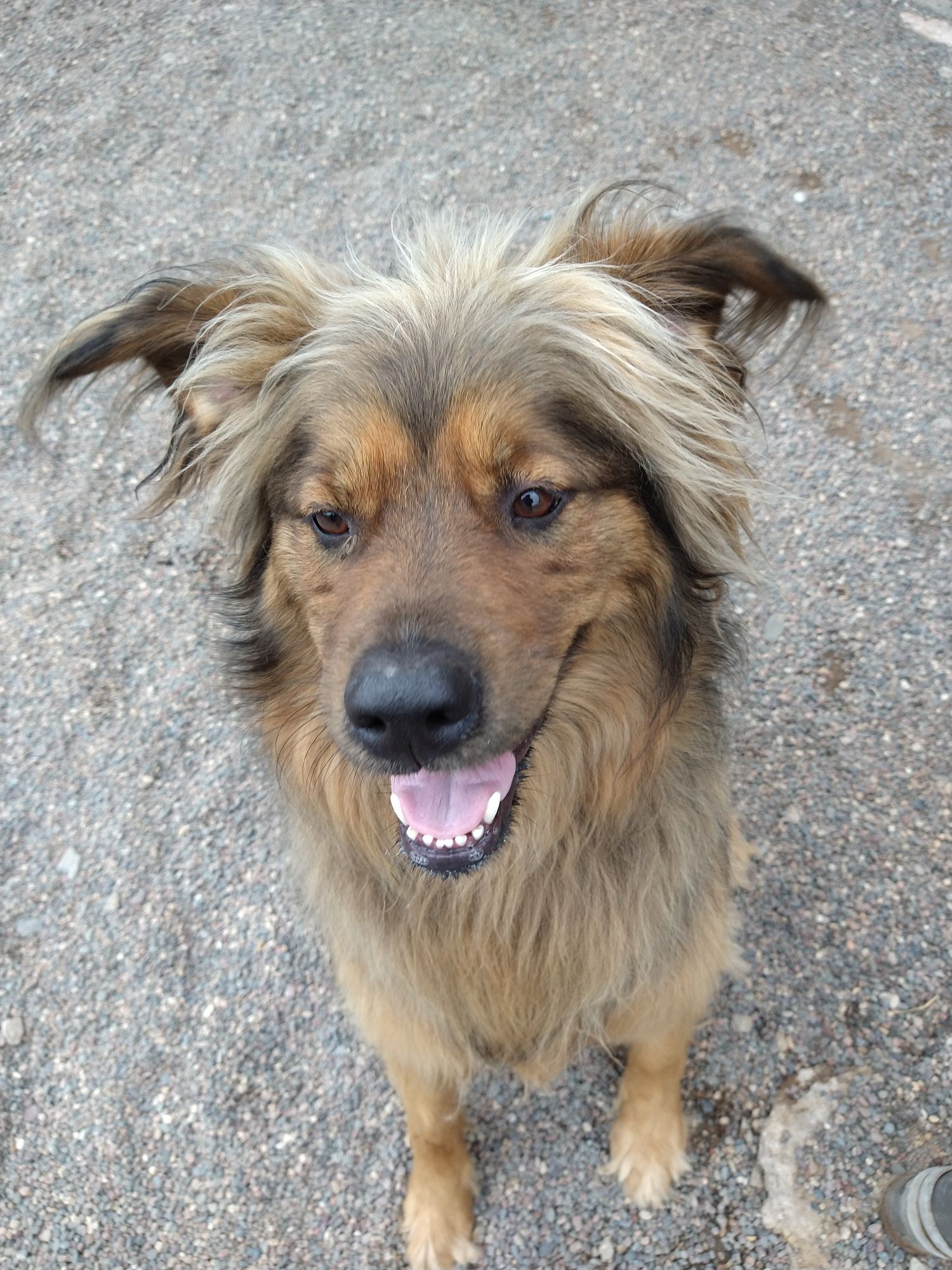
Are you considering adding a new pet to your family? If so, check out these great reasons to adopt a mixed breed.
1. Mixed breeds tend to live longer than purebreds
Mixed breeds result in a lower chance of certain health problems, such as hip dysplasia, luxating patella, and more.
2. Mixed breeds are so unique
One of the most interesting things about mixed breeds is you can get so many different variations. You never know what they will look like and most likely won’t find another who looks quite like them.
3. Adoption comes with benefits
Not only will you be helping and supporting a wonderful business but adopting from shelters will ensure that your dog will be in good health and will be a good match to fit your needs. So, whether you have children, cats, or other dogs at home, there are many different kinds of lovely mixed breeds that you’ll be able to find at a shelter that would be perfect for your home.
4. Mixed breeds are more budget-friendly
Generally it is more expensive to purchase a purebred dog. When adopting a shelter dog, you will find that the cost is usually lower and may include basic wellness services such as vaccinations and altering.
5. You’d save a life
When adopting from a shelter you are giving the shelter more resources and revenue to continue caring for more pets. You’re also allowing for more strays to come into the shelter, and giving your dog their perfect forever home.


